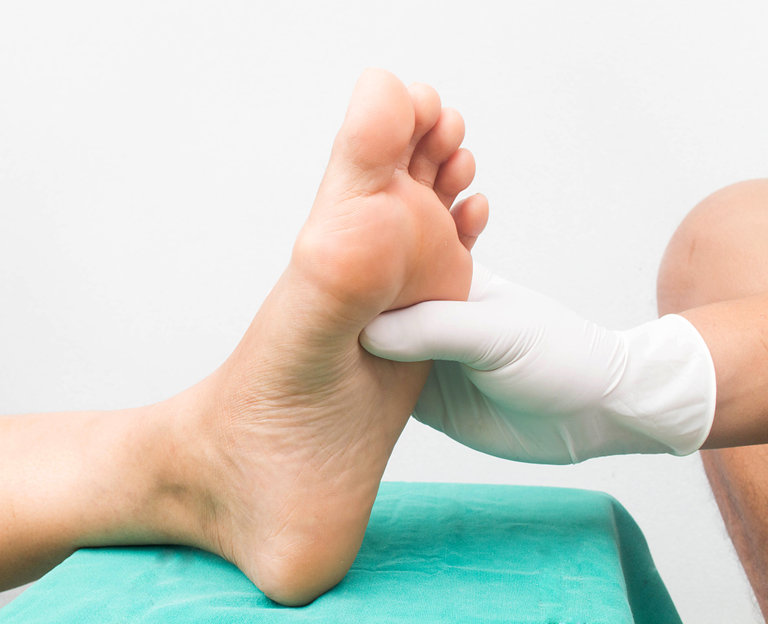Diabetic Neuropathy
Neuropathy is a major long-term complication of Type 1 and Type 2 Diabetes.
Diabetic neuropathy often presents as tingling, loss of sensation, pain, and numbness in the legs, feet, arms, and hands. Loss of sensation can lead to loss of balance and the development of wounds or ulcerations, especially on the feet. When not adequately treated, the risks of infection and amputation are high.
Diabetic neuropathy is considered to be an irreversible disorder with traditional treatments being focused on reducing the pain symptoms with drugs or specialized footwear.
However, many patients also have compression of the swollen nerves, which further worsens the symptoms of pain, numbness and balance problems. Decompression surgery (like carpal tunnel release) can also be performed in the leg and foot, and is proven to increase feeling, decrease pain and improve balance for many people! Numerous clinical studies have been published reporting the value of nerve decompression surgery in the treatment of peripheral diabetic neuropathy.
Goals of surgery are to restore sensation to the hands or feet, reduce or eliminate pain and to regain strength. If sensation is improved in the feet, the risk of having an ulcer or infection leading to an amputation is nearly eliminated. Many patients are able to discontinue their medications relating to neuropathy after this procedure.
If you suffer from diabetic neuropathy, Doctors Hagan and Brown can determine whether surgery might be appropriate for you. A comprehensive evaluation will be performed to determine whether you have compressed nerves that may respond to surgery. We have helped many patients regain sensation and get relief from pain with this approach.

- Patients who have their diabetes under control with a low HgbA1C level, and good blood flow to the feet.
- Persistent issues with pain and/or numbness in the feet.
- Balance problems.
- Troubles with ulcer formation or risk of having an amputation.
Decompression surgery is not designed to treat the underlying problem – nerve damage and swelling due to high sugar in the nerves from diabetes. Fo this reason, surgery has not been an option in the past. However, swollen nerves are a set-up for getting pinched as they travel through tight spaces, like the carpal tunnel at the wrist. These same points exist in the legs and feet. If compression is present, then surgery can help significantly with pain, numbness, poor balance and ulcer/amputation risk. These are small, outpatient operations that can have dramatic effects!
The locations that nerves can be compressed (pinched) in the leg and foot are very similar to those in the arm and hand. They are very predictable. The doctors at Neuropax clinic are expert in examining these nerves and can very quickly tell which ones are pinched and whether surgery may help.
- Tarsal Tunnel. Lyons DA, Brown DL: Neurosurgery by Example, Peripheral Nerve Volume, Selden ed; Yang and Wilson vol ed; Oxford University Press, NY, 2017.
Nerve Surgery Helps Relieve Chronic Pain
The majority of patients with chronic pain report significant decreases or complete resolution of their pain following nerve surgery. Most patients describe the ‘nerve pain feelings’ are improved as soon as the following day. Discomfort from the operation is frequently described as a completely different sensation, which subsides in the next few weeks.